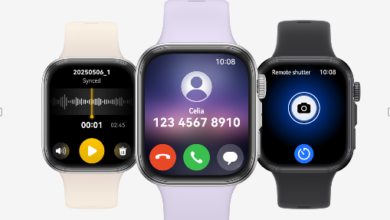The Role of Visuals in Academic Writing

Visuals are powerful tools in academic writing. When used correctly, they can simplify complex data, enhance understanding, and strengthen arguments. However, poor or misleading visuals can have the opposite effect—confusing the reader and weakening credibility. In this article, we explore the effective use of visuals in research papers, including how to create and format them properly using ResearchPal.
When and Why to Use Visuals in Research
In academic writing, visuals aren’t decorative—they serve a clear purpose.
You should use visuals when:
- Presenting complex data (e.g., large datasets or trends)
- Comparing multiple variables or groups
- Clarifying patterns, relationships, or changes over time
- Supporting your arguments with visual evidence
Well-placed visuals help readers quickly interpret results, compare findings, and understand your methodology—especially in fields like social sciences, medicine, engineering, and data-driven research.
Types of Visuals in Academic Writing
Selecting the right type of visual is crucial. Different data and objectives require different formats.
Common types include:
- Graphs: Line graphs, bar charts, histograms for quantitative data
- Tables: Display raw data, numerical results, or classifications
- Charts: Pie charts, flowcharts, and organizational charts for comparisons or processes
- Infographics: Combine text and visuals to summarize concepts creatively
- Diagrams: Show relationships, frameworks, or workflows
Using ResearchPal, researchers can generate visual aids based on their data sets while ensuring academic formatting standards are met.
Creating Data Visualizations with ResearchPal Tools
Modern AI research assistants like ResearchPal offer features that go beyond organizing your sources. When you Search Papers for quantitative or qualitative data, ResearchPal helps you interpret findings visually. You can then use its built-in visualization tools to:
- Convert tables or datasets into graphs automatically
- Generate charts from research summaries
- Customize labels, axes, and color schemes
- Embed visuals directly into your document drafts
These features streamline your workflow—especially when you’re managing large volumes of Search Papers for literature reviews or data analysis—allowing you to focus more on insights rather than manual formatting.
Read also: AI Face Swap Technology in Prank Videos and Viral Challenges
Labeling and Referencing Images Properly
Visuals must be clearly labeled, cited, and discussed in your text. Here’s how to do it right:
Best practices:
- Include figure numbers (e.g., “Figure 2. Average Daily Study Hours”)
- Add titles or captions to describe the visual’s content
- Always reference the figure in the body of the text (e.g., “As shown in Figure 2…”)
- Provide source attribution if the visual was adapted from another paper
- Ensure consistency in style and formatting across visuals
ResearchPal automatically generates figure captions and references when inserting visual aids, ensuring they meet citation style requirements like APA or MLA.
Avoiding Misleading Visuals
A misleading visual can harm the credibility of your work. Common mistakes include:
- Truncated axes (which exaggerate differences)
- Overuse of 3D effects that distort perception
- Inconsistent scales or missing labels
- Cherry-picked data that misrepresents trends
- Too much decoration that distracts from the data
Using AI-powered tools like ResearchPal, you can avoid these pitfalls through data integrity checks, visual style suggestions, and best-practice warnings.
Tips & Tricks for Effective Academic Visuals
- Use color schemes that are accessible and printer-friendly
- Stick to one message per visual—don’t overcrowd charts
- Maintain visual hierarchy (important info stands out first)
- Align charts with your research narrative and argument flow
- Double-check that visuals are interpretable without reading the full paper
FAQs – Visuals in Academic Writing
Q1: Can I use visuals from another paper in my research?
A: Yes, but you must properly cite the original source and follow copyright guidelines.
Q2: Do I need to include a visual in every paper?
A: Not necessarily. Use visuals only when they add clarity or support your claims.
Q3: What file formats are best for inserting visuals into papers?
A: High-resolution formats like PNG, SVG, or JPEG are commonly used in academic submissions.
Q4: How can ResearchPal help with visuals?
A: ResearchPal allows users to create, label, and insert graphs and charts directly from their research data.
Q5: Can visuals replace written explanation?
A: No. Always explain the data presented in your visuals and discuss its relevance in your text.
Conclusion
Visuals are essential in transforming raw data into digestible and compelling narratives. When used responsibly and professionally, they can elevate the impact of your research. With tools like ResearchPal and its AI-powered features, even beginners can create visuals that not only look good but also uphold academic integrity.
Start integrating visuals into your next project with confidence—and let them speak as powerfully as your words.




